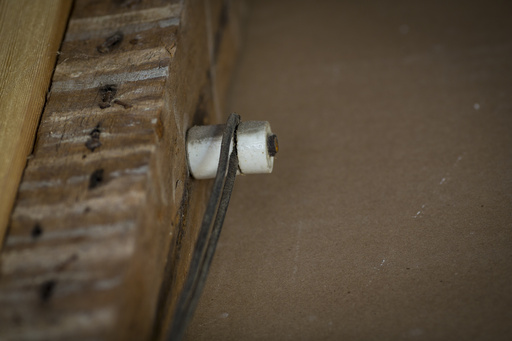
WILLIAMSBURG, Va. — A Virginia museum is nearing the completion of restoring the oldest surviving schoolhouse for Black children in the nation, where hundreds, primarily enslaved, learned reading skills through a curriculum that supported the institution of slavery.
The Colonial Williamsburg museum has successfully identified over 80 students who attended this institution in the 1760s. Among those were young children like Aberdeen, aged 5, whose enslavement was tied to a saddle and harness maker; Bristol and George, aged 7 and 8, owned by a doctor; and Phoebe, just 3, who belonged to local tavern keepers. Another notable student, Isaac Bee, eventually emancipated himself, and reports indicate his enslaver warned that Bee “can read” in advertisements seeking his capture.
The Williamsburg Bray School is scheduled for dedication on Friday, with plans to offer public tours beginning this spring. Colonial Williamsburg presents the history of Virginia’s colonial capital through a range of interpretive programs and restored historic structures. The schoolhouse, built in 1760, retains much of its original wood and brick, and is set to highlight a complex narrative centered around race, education, and resistance prior to the American Revolution.
The education provided at the school rationalized slavery through a religious lens, teaching the children to accept their circumstances as divine will. Nonetheless, gaining literacy empowered these young students, allowing them to share their knowledge with family and fellow enslaved individuals.
“We acknowledge that this was a pro-slavery institution,” stated Maureen Elgersman Lee, director of William & Mary’s Bray School Lab, a collaborative effort between the university and the museum. However, she added that the school embodies a different significance in today’s context. “It symbolizes resilience and resistance,” Lee commented, noting the continuity of the school’s legacy into modern times.
In an effort to connect with the descendants of former students, the lab has had some success. Among those traced back to the school is Janice Canaday, 67, who also serves as the museum’s African American community engagement manager. She has family ties to students Elisha and Mary Jones. “Understanding these connections roots you in history,” said Canaday, highlighting how knowledge of her family’s past provides strength and empowerment.
The Bray School was established in Williamsburg and other colonial locations following the advice of Benjamin Franklin, who was associated with a charity dedicated to education. This institution was unique for its period, as Virginia only introduced anti-literacy laws in the 1800s. During the colonial era, many leaders across America prohibited the education of enslaved individuals, fearing that literacy would incite a desire for freedom among them.
Ann Wager, a widow, served as the white teacher at the Williamsburg school, instructing an estimated 300 to 400 students who were between 3 and 10 years old. The school ceased operations upon Wager’s death in 1774, after which the building transitioned into a private residence before being incorporated into the William & Mary campus, undergoing various expansions and uses including student housing.
Researchers identified the structure in 2020 by using a scientific method that analyzes tree rings in wood and, last year, it was relocated to Colonial Williamsburg, which features remnants of the original colonial city. The museum and university have been focused on restoring the schoolhouse, exploring its educational methods, and uncovering the histories of past students.
According to Elizabeth Drembus, the genealogist at the lab, they have linked some descendants to the Jones and Ashby families, both of whom had free Black students at the school. However, uncovering these family histories is complex, as the majority of enslaved individuals lost their identities and were torn from their family units, leading to scant records. Only three years of school rosters have survived from the period.
Drembus is actively engaging with local residents to discuss their family histories and is utilizing 18th-century property documents, tax records, and diaries of enslavers to trace connections. “Records of formerly enslaved individuals were maintained in a manner that dehumanized them,” noted Drembus.
Researching the school’s curriculum has proven more straightforward. The English charity responsible for operating the school provided meticulous records of the textbooks sent to the institution, as indicated by Katie McKinney, an associate curator at the museum. The materials included a small spelling book, which was discovered in Germany, featuring basic phonics as well as advanced spelling texts, the Book of Common Prayer, and various Christian writings.
With the restoration of the schoolhouse nearly complete, about 75% of the original flooring remains intact, allowing visitors to step where the students and their teacher once walked. During a recent visit, Canaday reflected on whether the children felt safe and cared for in the classroom. She pondered if some of Wager’s maternal instincts influenced her interactions with the children, contemplating how often moments of humanity broke through the oppressive structure of the time.
